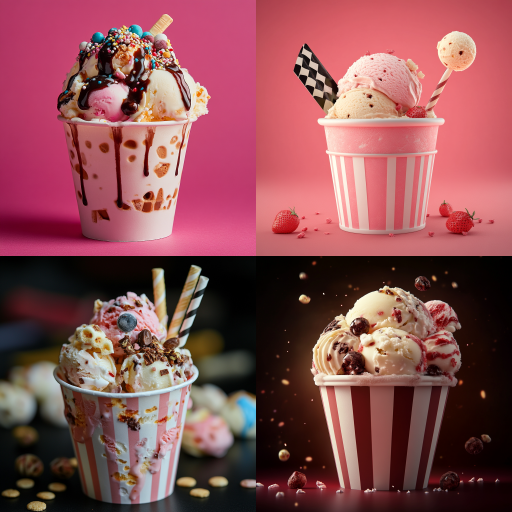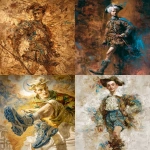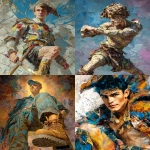Explore the Best AI Image Gallery

AI in Product Photography: A New Era of Visual Marketing
In the rapidly evolving landscape of product photography, artificial intelligence (AI) is making waves, transforming how images are captured, processed, and presented. As brands strive to make a lasting impression in an increasingly competitive market, AI emerged as a crucial ally in enhancing visual marketing strategies. This post delves into the multifaceted impact of AI on product photography, exploring its potential uses, creative implications, ethical concerns, and future trends.
The Transformative Power of AI in Photography
Historically, product photography has been a meticulous task that requires a skilled photographer to carefully compose lighting, backgrounds, and angles. However, AI tools are revolutionizing this traditional approach by providing automation and enhanced capabilities that streamline the photography process.
- Automation of Repetitive Tasks: AI applications can automate time-consuming processes such as background removal, color correction, and image retouching. This efficiency allows photographers to focus more on the creative aspects of their work.
- Image Recognition and Tagging: AI-powered algorithms can analyze images and apply appropriate tags or keywords, improving organization and searchability. This technological advancement can enhance library management for brands with vast portfolios.
- Virtual Staging and Augmented Reality: Tools utilizing AI can create realistic virtual environments or enhance existing ones in product photos. By integrating AR, potential customers can visualize products in their settings, creating a richer shopping experience.
Impact on the Creative Industry
The integration of AI into product photography is not just about efficiency; it is also reshaping creative expressions. Many photographers and brands are embracing AI as a partner rather than a replacement, leveraging its capabilities to push creative boundaries. Some noteworthy collaborations include:
- Enhanced Creativity: AI tools can suggest angles, lighting setups, and editing styles that photographers may not have previously considered. This support allows artists to explore new creative avenues, leading to innovative product presentations.
- Mixing Human and Machine Aesthetics: Using AI-generated suggestions and human intuition can result in unique photo compositions that appeal to diverse audiences. The combination of machine efficiency and human creativity can resonate on multiple levels.
- Reduce Costs and Time: Utilization of AI can significantly reduce production timelines and costs, allowing brands to respond faster to market trends and consumer demands.
Ethical Considerations
As with any powerful technology, the rise of AI in product photography raises numerous ethical questions. Key concerns include:
- Authenticity: With AI generating images and modifying reality, questions arise around the authenticity of the visuals brands present. Are these highly curated images truly representative of the products?
- Copyright Issues: When AI-generated images are used for marketing, who owns the rights? The photographer, the AI developer, or the brand? Establishing clear guidelines in this evolving landscape is essential.
- Impact on Employment: While AI enhances the productivity of photographers, it could also lead to a reduction in job opportunities. The creative industry must address the balance between technological advancement and the continued need for skilled creatives.
Future Trends in AI and Product Photography
As AI technologies continue to evolve, it is essential to keep an eye on emerging trends that will shape the future of product photography:
- AI-Driven Creative Tools: Expect more sophisticated AI-generated creative suggestions tailored to individual brands, enabling highly personalized marketing strategies.
- Improved Personalization: AI can analyze consumer behaviors and preferences, allowing brands to create tailored product images that cater to specific target audiences in real-time.
- Sustainability: AI can play a role in reducing waste in product photography by optimizing resources. For instance, virtual product photography eliminates the need for physical samples, a practice that minimizes environmental impact.
In conclusion, the integration of AI in product photography opens up a realm of possibilities that benefit brands, photographers, and consumers alike. By striking a balance between technological advances and ethical considerations, the creative industry can harness the power of AI to drive innovation and redefine visual storytelling.




](https://images.ai-img.art/thumbnails/150/8c3bd422d50d35735d8fb33bd314a79e30e5b150129d5d09bdad822a2007593f.webp)

](https://images.ai-img.art/thumbnails/150/1614d64dd7156c95db952258978be809eb3db8cea4453fec69c49cbdfe63fa94.webp)





](https://images.ai-img.art/thumbnails/150/3a60737a5b67fa252207ad1ae6db245a26284f53fb5846996bb34515b39ff269.webp)